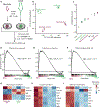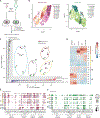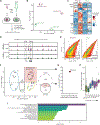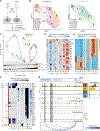The gene regulatory basis of bystander activation in CD8+ T cells
- PMID: 38394230
- PMCID: PMC11973513
- DOI: 10.1126/sciimmunol.adf8776
The gene regulatory basis of bystander activation in CD8+ T cells
Abstract
CD8+ T cells are classically recognized as adaptive lymphocytes based on their ability to recognize specific foreign antigens and mount memory responses. However, recent studies indicate that some antigen-inexperienced CD8+ T cells can respond to innate cytokines alone in the absence of cognate T cell receptor stimulation, a phenomenon referred to as bystander activation. Here, we demonstrate that neonatal CD8+ T cells undergo a robust and diverse program of bystander activation, which corresponds to enhanced innate-like protection against unrelated pathogens. Using a multi-omics approach, we found that the ability of neonatal CD8+ T cells to respond to innate cytokines derives from their capacity to undergo rapid chromatin remodeling, resulting in the usage of a distinct set of enhancers and transcription factors typically found in innate-like T cells. We observed that the switch between innate and adaptive functions in the CD8+ T cell compartment is mediated by changes in the abundance of distinct subsets of cells. The innate CD8+ T cell subset that predominates in early life was also present in adult mice and humans. Our findings provide support for the layered immune hypothesis and indicate that the CD8+ T cell compartment is more functionally diverse than previously thought.
Conflict of interest statement
Figures







References
Publication types
MeSH terms
Substances
Grants and funding
LinkOut - more resources
Full Text Sources
Molecular Biology Databases
Research Materials

